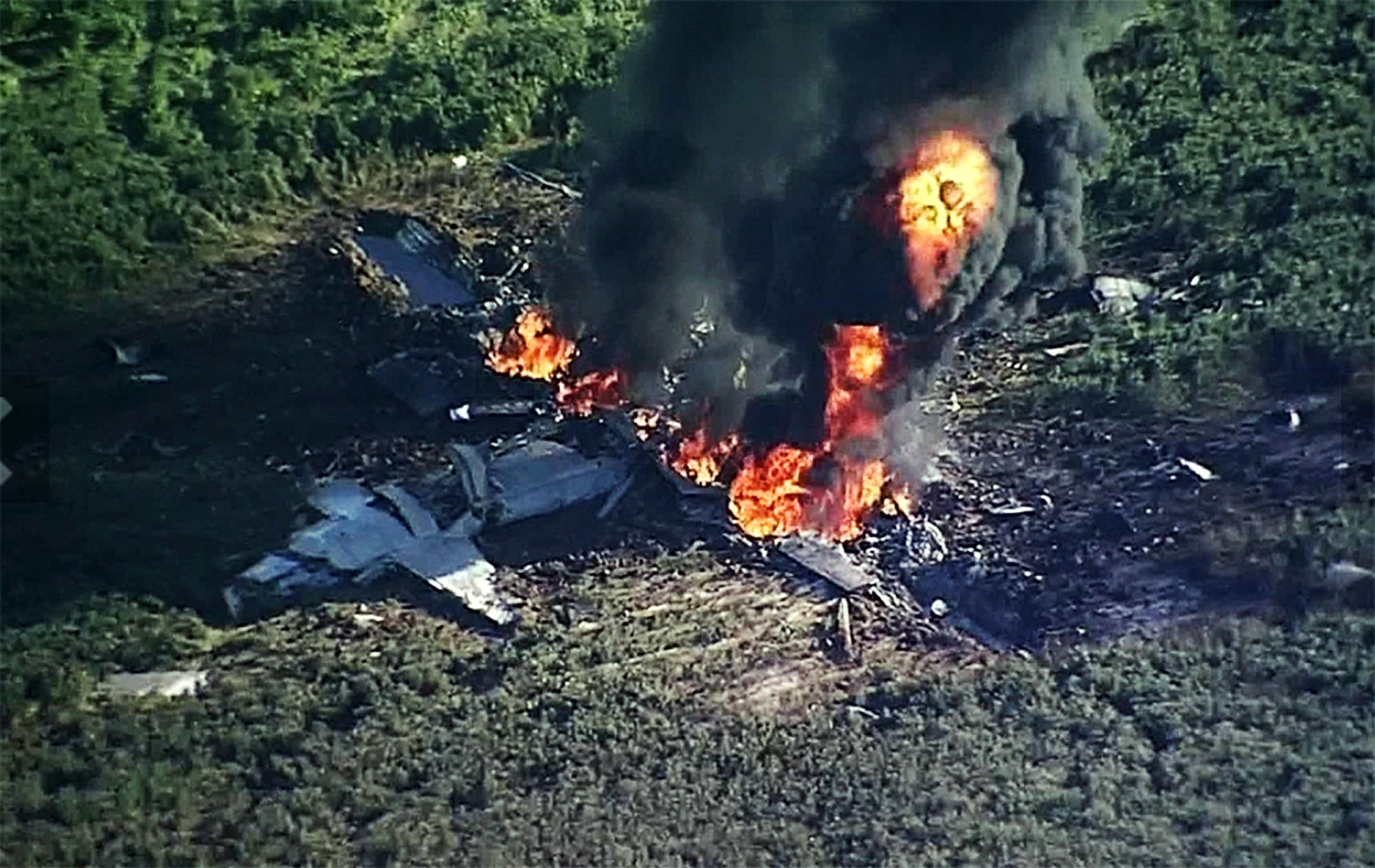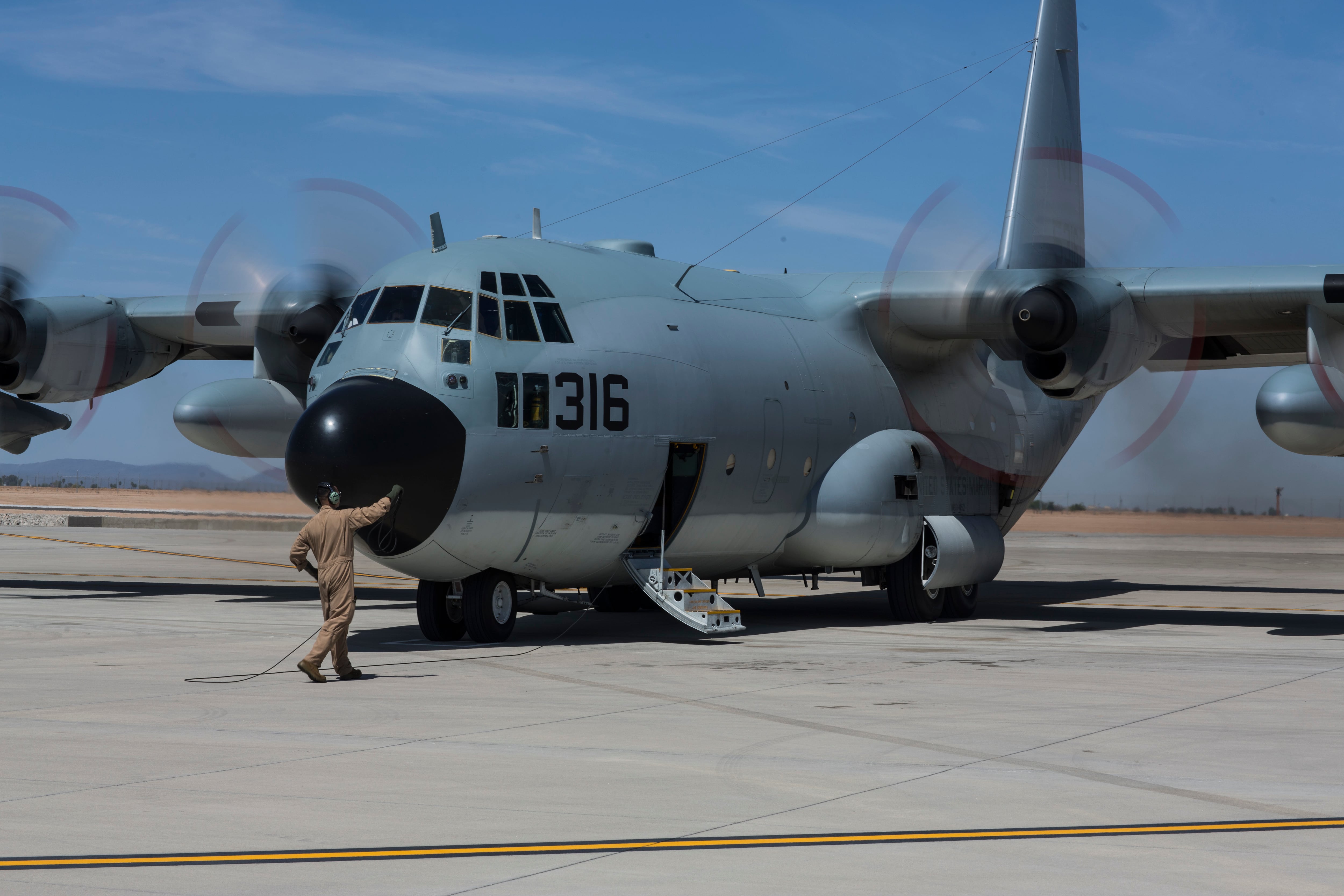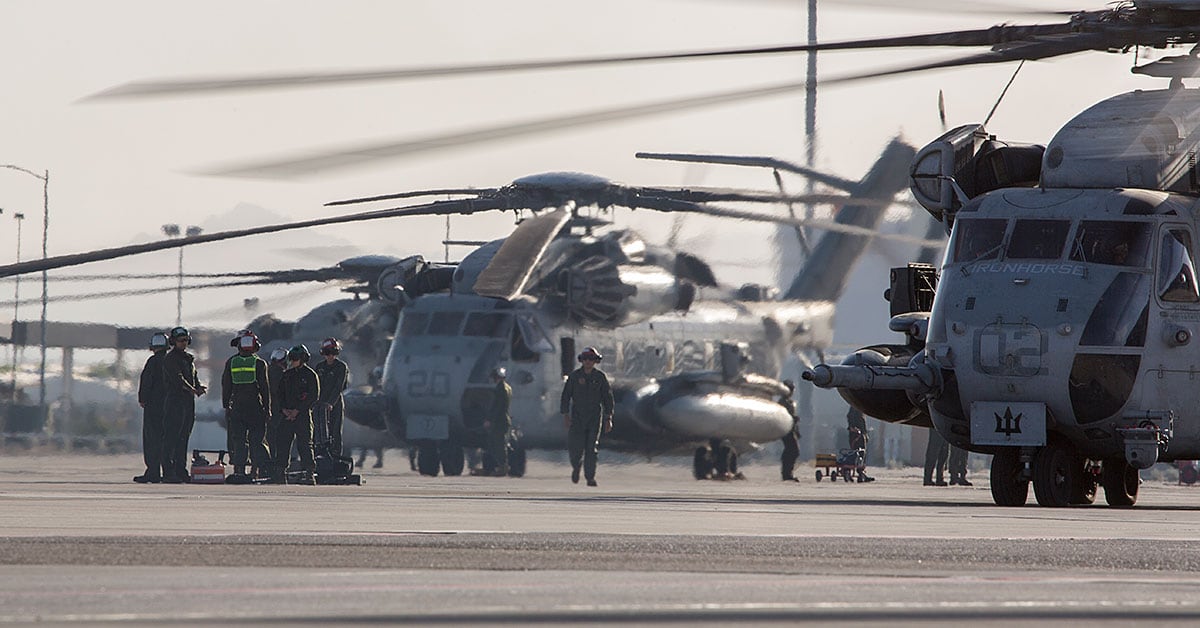WASHINGTON — Sloppy maintenance work at an Air Force depot was at the root of a tragic crash of a Marine Corps Reserve KC-130T that resulted in the deaths of 16 service members in July 2017.
According to a command investigation and about 2,000 pages of supporting documentation, obtained exclusively by Defense News and Military Times, a corroded blade broke off of the aircraft, sliced through the fuselage, and set off a chain of events that ended with the plane splitting into three pieces and crashing into a Mississippi soybean field.
The blade was last overhauled at Warner Robins Air Logistics Complex in 2011, where civilian maintainers are responsible for rooting out corrosion and other such problems. But although the investigators found evidence that small cracks and pits were already present in the propeller blade, maintainers did not properly treat it — allowing it to grow into a long fracture.
RELATED

Now, the Air Force is taking steps to make sure that those mistakes are never repeated.
"We have commissioned an independent review team made up of experts from the Navy, Marine Corps the Air Force and industry to look at the blade overhaul process, to revamp that process, to ensure that we have the proper procedures, the latest technology, the right technical manuals and the right training,” Brig. Gen. John Kubinec, the current commander of WR-ALC, said in a recent interview.

The team has come up with a standardized overhaul process that can be applied to Air Force, Marine Corps and Navy propellers — a massive departure from the procedures used in 2011, which set special standards for Navy and Marine Corps blades.
Read the Marine Corps investigation of the 2017 KC-130T mishap here.
WR-ALC, like other Air Force repair facilities, threw out its records after two years, making it difficult to know exactly which maintenance requirements were skipped or overlooked. But investigators, who assessed the mishap aircraft’s blades and the WR-ALC’s workflow, made many troubling findings.
For instance, the investigation found no evidence that the corrosion-preventing permatreat coating or epoxy primer was ever put onto the blade that incited the accident, even though such treatments were required by the Navy at the time.
Investigators also discovered that eddy current inspections, which use electromagnetic waves to detect anomalies under a metal surface, were also not performed at WR-ALC during 2011, even though they were a compulsory part of the Navy process.
RELATED

WR-ALC halted all C-130 blade overhauls in September 2017, when investigations first revealed the root of the July mishap. It started working with the other parties in the independent review team on a single, streamlined overhaul process for all the services’ blades, and the new process is currently under review, Kubenic said.
Most likely, it will be validated in time to restart blade overhauls in January 2019, stated Wendy Varhegyi, a spokeswoman for Air Force Materiel Command.
The new 21-step process is “largely similar” for both the Air Force and Navy blades, with “a very small number of differences due to service-unique propeller configurations and differing engineering assessments,” Varhegyi said.
It makes a number of advancements to the processes used in 2011, such as:
- Updating the fluorescent penetrant inspection, which involves submerging metal components into a fluorescent dye so that maintainers can see corrosion and cracks under a black light. Under the new process, the blades will be robotically submerged in the dye for a minimum of four hours, according to the investigation. This greater “dwell time” will aid in the "detection of potential corrosion or cracking of the propeller blades and critical components,” Varhegyi said.
- New eddy-current inspection equipment and procedures that automate some of the process, improve the sensitivity of the technologies used to find corrosion, and increase the area that is assessed.
- A more advanced “computer-controlled electronic borescope” that captures imagery at higher definition and resolution than older models. “The new process will also be digitally recorded and retained for review by technicians or engineers if required,” Varhegyi said.
- Requiring that a “glass bead blast” is conducted on all blades before inspections. The process uses abrasive chemicals to clean metal surfaces and improves the application of protective coatings.
In addition to these advances, WR-ALC is making the other changes recommended by the investigation, Kubinec said. It will now retain all maintenance documentation during a blade’s lifecycle instead of disposing of records after a set period of time.
WR-ALC is revamping quality control and assurance procedures to ensure that all maintenance tasks are properly checked. The complex is also revising its agreement with the Navy on C-130 blade overhauls to more precisely define each parties’ obligations.

“This is a hard problem, and we’re working very closely with the Navy and Marine Corps officials on it,” Kubinec said.
The WR-ALC commander could not quantify exactly how much the Air Force will spend on new equipment and training needed to stand up the new overhaul process, but stated that the sum was well worth it.
“We’re getting the technology we need because we can’t afford to let this happen again,” Kubinec said.
However, the Marine Corps investigation warned that it may be more difficult than anticipated to implement the new process.
In an April memo, a Marine investigator applauded the independent review team’s efforts to create a single set of procedures and rules for C-130 blade overhauls, stating that “the unique requirements in each publication for different branches of service is a critical issue that must be resolved immediately.”
However, the investigator expressed concern about the team’s lack of chain of command, which he believed could muddy reporting requirements or implementation responsibilities.
The memo recommends that Naval Air Systems Command conducts a review to ensure Navy and Air Force are on the same page as they lay out the responsibilities and requirements of the new process.
It notes that the Navy still had not come up with a comprehensive evaluation process that ensures work is done correctly, while WR-ALC continued to lack the oversight needed to ensure compliance with technical documents. Most worryingly, WR-ALC "failed to show significant process improvements" even after the Navy's initial audit after the mishap in August 2017.
"This is concerning considering the same procedural and quality control errors that allowed" the mishap propeller "and countless other propellers to erroneously enter the fleet could still exist,” the memo states.
The investigators were “highly critical” of the Air Force, and for good reason, said Pat Kumashiro, a retired Air Force colonel who served as the chief of the service’s maintenance division from 2012 to 2016.
But unfortunately, as military aircraft get older, corrosion becomes more of a problem. And that, along with the other mechanical issues that come with advanced age, can add up to a lot of unforseen work that is often very difficult for maintainers to get their arms around, he said.
With older aircraft like the A-10, C-130 and F-15, “the ‘over-and-above’ work increases” every time they move through depot maintenance.
"That is really problematic and very challenging for the depot,” he said.
RELATED

One opportunity for lawmakers and the department to make sweeping organizational and process improvements is through the new commission on military aircraft safety.
The commission, established in the 2019 defense policy bill following a Military Times investigation on aviation mishaps over the past decade, will assess causes and key factors in fatal accidents. Of the eight-person panel, two members have been named: Pete Geren, a former Texas congressman and secretary of the Army, and Raymond E. Johns Jr., a retired Air Force general with more than 5,000 flight hours under his belt.
Valerie Insinna is Defense News' air warfare reporter. She previously worked the Navy/congressional beats for Defense Daily, which followed almost three years as a staff writer for National Defense Magazine. Prior to that, she worked as an editorial assistant for the Tokyo Shimbun’s Washington bureau.








